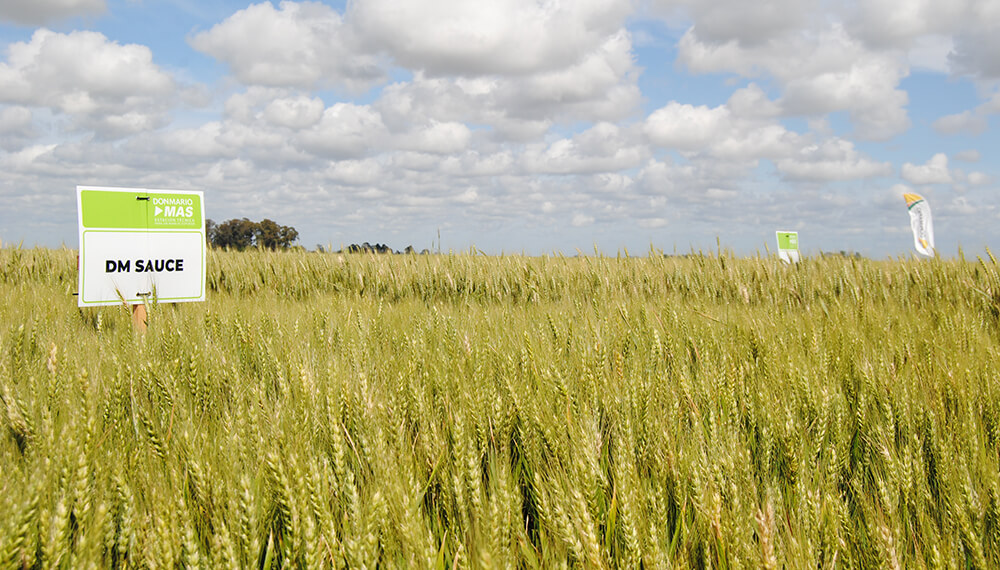The analysis and incorporation of technology in the agricultural production is a constant challenge, which becomes more complex by adding in addition to productive variables, the aspects of quality and environment. That is why Bunge and DONMARIO Seeds they work together for the choice of genotypes and fertilization models.
To reach high production levels and increase the quality of wheat, the generation of basic information is essential in order to develop field technologies and generate integrated fertilization models that consider both the supply of soil nutrients, as well as the requirements according to the characteristics of the different cultivars.
“The introduction of genotypes modern transformed the productive reality of wheat, broadening the horizon of performance in many regions and modifying the quality parameters “, expressed Jerome Costanzi de DONMARIO.
For his part Matías Saks from Bunge He added: “From the beginning we understood that the dilemma ‘performance vs quality ‘ We could get away with adjusting the fertilization. This is how we started a joint work to address the solution of the problem and be able to have accurate information regarding fertilization for each cultivar of DONMARIO”.
Both companies decided to join forces by making a test network that after 5 years of experiences and more than 700 installments distributed in the different productive regions offers a wealth of information that allows generating recommendations that include nitrogen supply for each of the varieties of DONMARIO Seeds.
Performance and Quality: Genetics + Management + Environment
One of the first working hypotheses was to demonstrate that with an adequate management of the supply of nitrogen (N) batches would be achieved with higher yields and improved quality for marketing. The results were overwhelming and highlight that, making the adequate supply of nutrients in high yield potential genotypes, it’s possible improve productivity along with commercial quality of wheat grains.
The interaction between genotype and nitrogen supply was very important. “The plots show that in some varieties we achieved a optimal performance with 30-35 kg / ha of N (considering soil and fertilizer) per ton of yield. In cultivars like DM Audaz, DM Sauce y DM Pehuén, that level of nitrogen supply is sufficient to optimize performance and generate a protein superior to 10% in more than one 60% of the cases. Other cultivars have higher requirements, as in the case of DM Algarrobo where we need 35-40 kg of N per ton. performance to achieve a high chance of exceeding the 10% protein”, Said Jerónimo Costanzi. In this way, knowing this interaction better leads to making better decisions and optimizing the economic result.
“One application vs two applications”
The nitrogen requirements of these plants are high and lead to the application of high doses of nitrogen fertilizer. Working high doses of N without losing efficiency is a challenge given that if efficiency is lost, profitability is lost and at the same time increases environmental impact. “In the network we compared a nitrogen application made at sowing against the same doses divided into two moments (50% sowing and 50% tillering) ”Commented Jorge Bassi from Bunge.
And he added: “The results indicate that in low and medium doses there is no benefit in dividing doses, even if there is a slight advantage in a single application, but working with applications greater than the 100 kg / ha of N significant differences begin to appear ”.
The results yielded a surprising premise. “The optimal nitrogen supply varied strongly, between the two forms of application, with one application the response saturated between 165 and 180 kg / ha of N while with two applications I did it with 15-30 kg / ha more than N (between 180 and 220 kg / ha of N), depending on the varieties involved ”, remarked Matías Saks.
This line of research is a great contribution in terms of information necessary to optimize the productivity of the varieties in each of the batches in production. “Producers at this time they are adjusting the doses to be applied in their batches and it is very interesting that they handle with precision this practice as important as the nitrogen fertilization in wheat”, Closed Jerónimo Costanzi.
–


